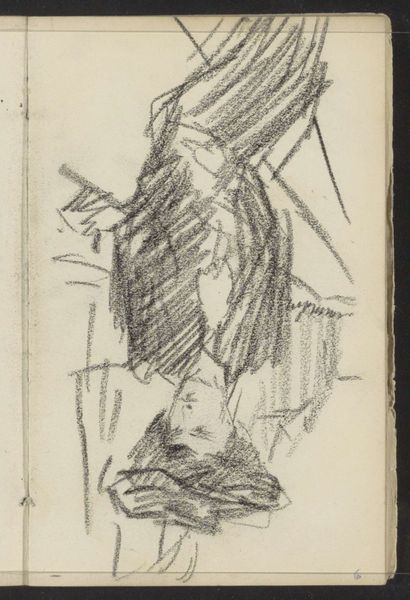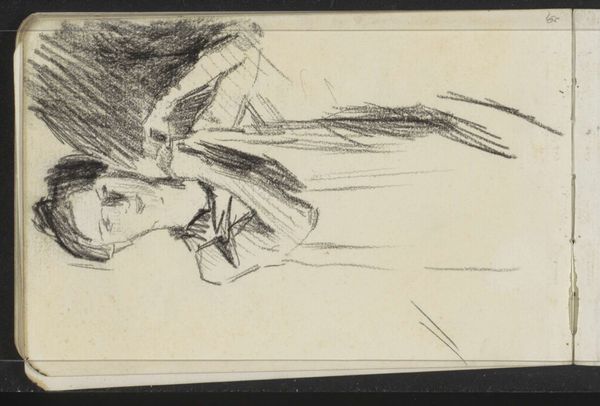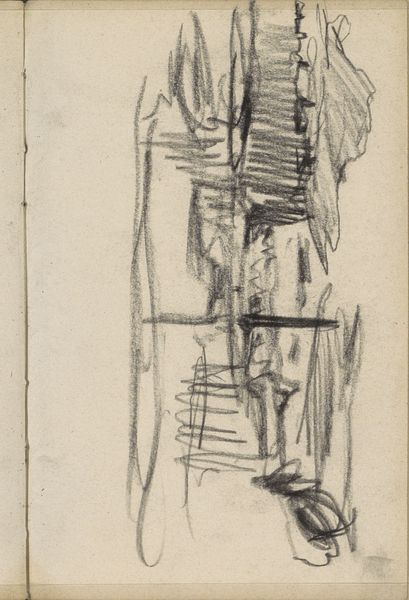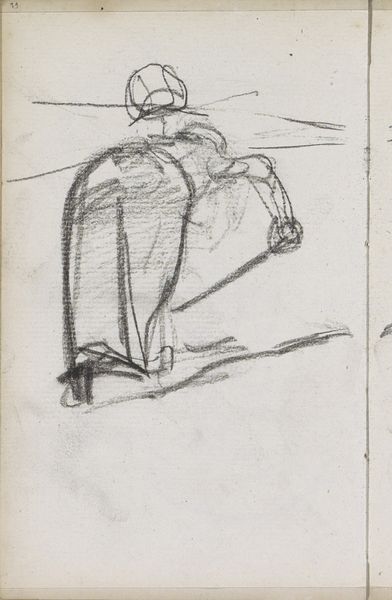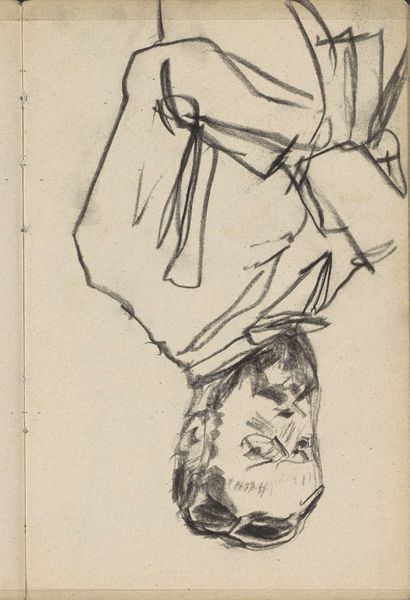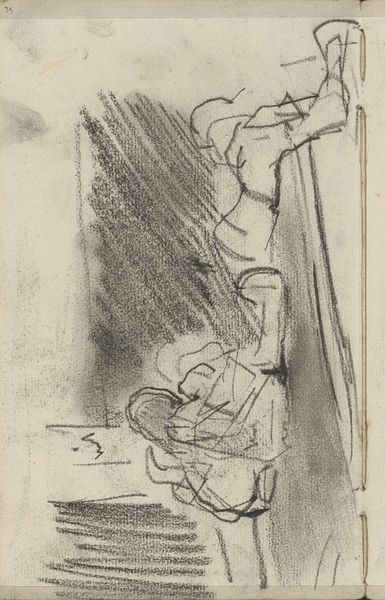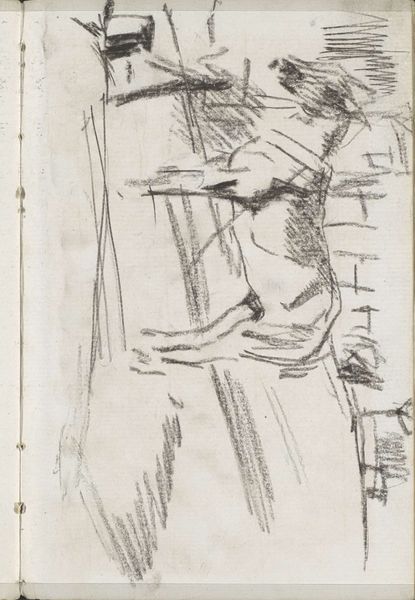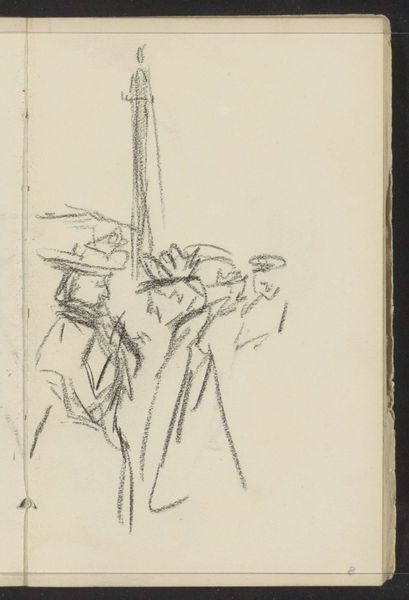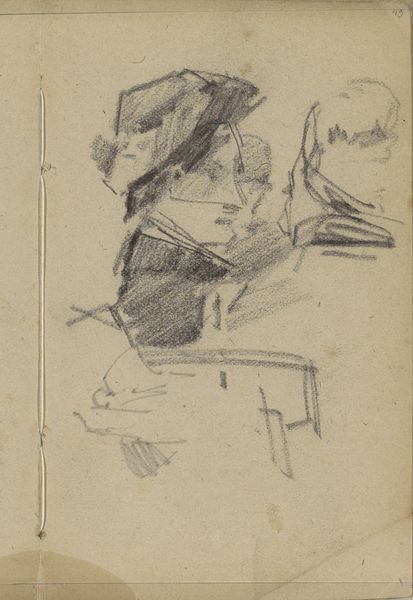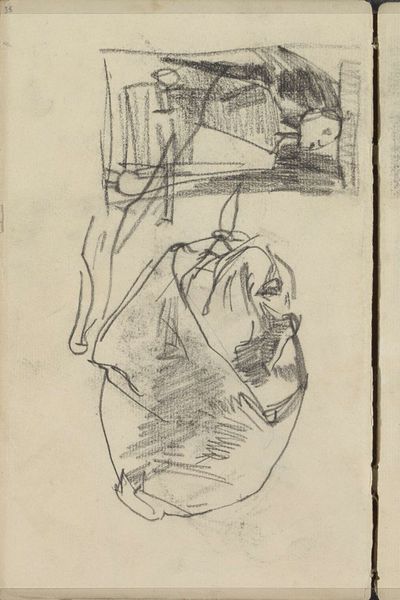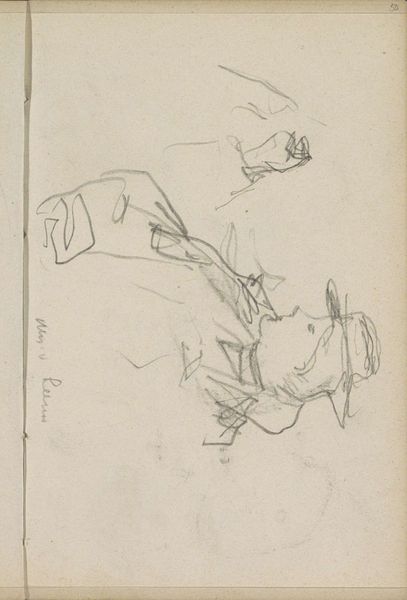
Copyright: Rijks Museum: Open Domain
Curator: Before us is a work from Isaac Israels, entitled "Vrouw met hoed, mogelijk op straat"—"Woman with hat, possibly on the street." Its creation is estimated sometime between 1887 and 1934, using pencil and ink. Editor: My first thought: spontaneous and free. It captures a fleeting moment, all in grays and blacks, almost as if snatched from peripheral vision. A hurried, candid view. Curator: Indeed. Israels was known for capturing modern life and the world around him. This drawing speaks to his practice of sketching in the moment, documenting the everyday with an almost journalistic eye. Look at the materiality – the immediacy of the pencil and ink sketch shows how available drawing became. Editor: The quick, broken lines forming the woman and her surroundings lend it an unfinished, provisional quality. Notice the hat, dominating the composition – a marker of social status, perhaps? Or maybe the curve directs us downward to meet her gaze, but…does she engage us? I almost feel like I am intruding, seeing something private. Curator: Possibly. Consider the accessibility of these materials; the sketch shows not only how accessible these implements became, but how much sketching grew as a social pastime, due in no small part to a rise in the materials available and also to the impressionists, who promoted en plein air paintings made in oils that dried much faster than those of artists from earlier time periods. These stylistic developments allowed many more artists than before to paint scenes on location, leading to artworks that are far more immediate than traditional paintings that take a studio setting and years of meticulous overpainting to finish. Editor: Precisely! But the very freedom Israels has in creating a rough, personal sketch also makes it appealing. The looseness in construction suggests a real presence beyond its hasty creation. Even with its imperfections, the drawing invites us to actively observe her in our contemporary era and setting as well. Curator: So in considering Israels' engagement with capturing ephemeral street scenes, the availability of materials clearly played a part. This small artwork becomes not only a portrait of a subject, but also of social change in an increasingly technological modern world. Editor: And by experiencing its formal incompleteness, perhaps it challenges our preconceived notions of portraits made in that world, prompting an unexpected sense of human interaction across more than a hundred years.
Comments
No comments
Be the first to comment and join the conversation on the ultimate creative platform.
